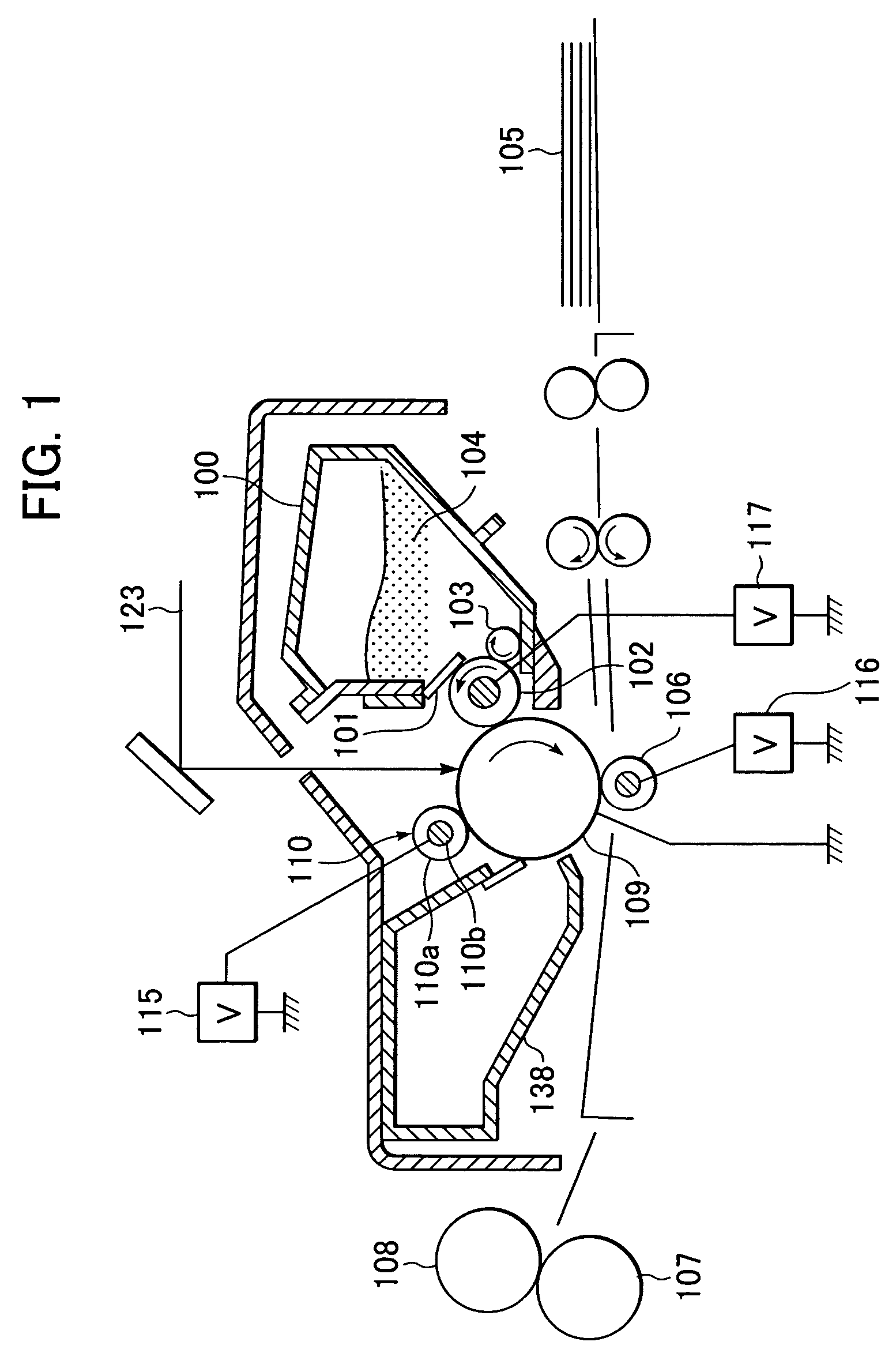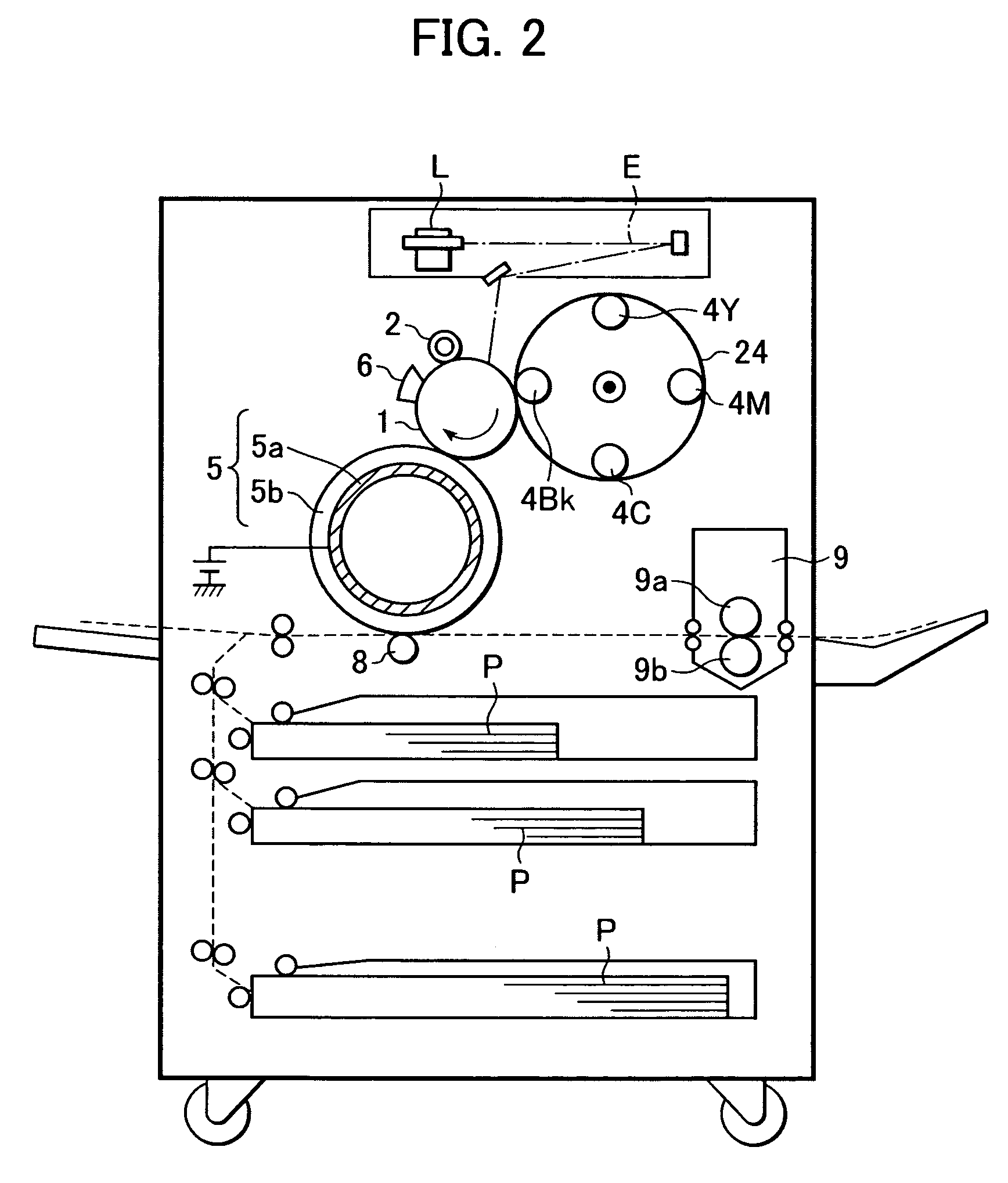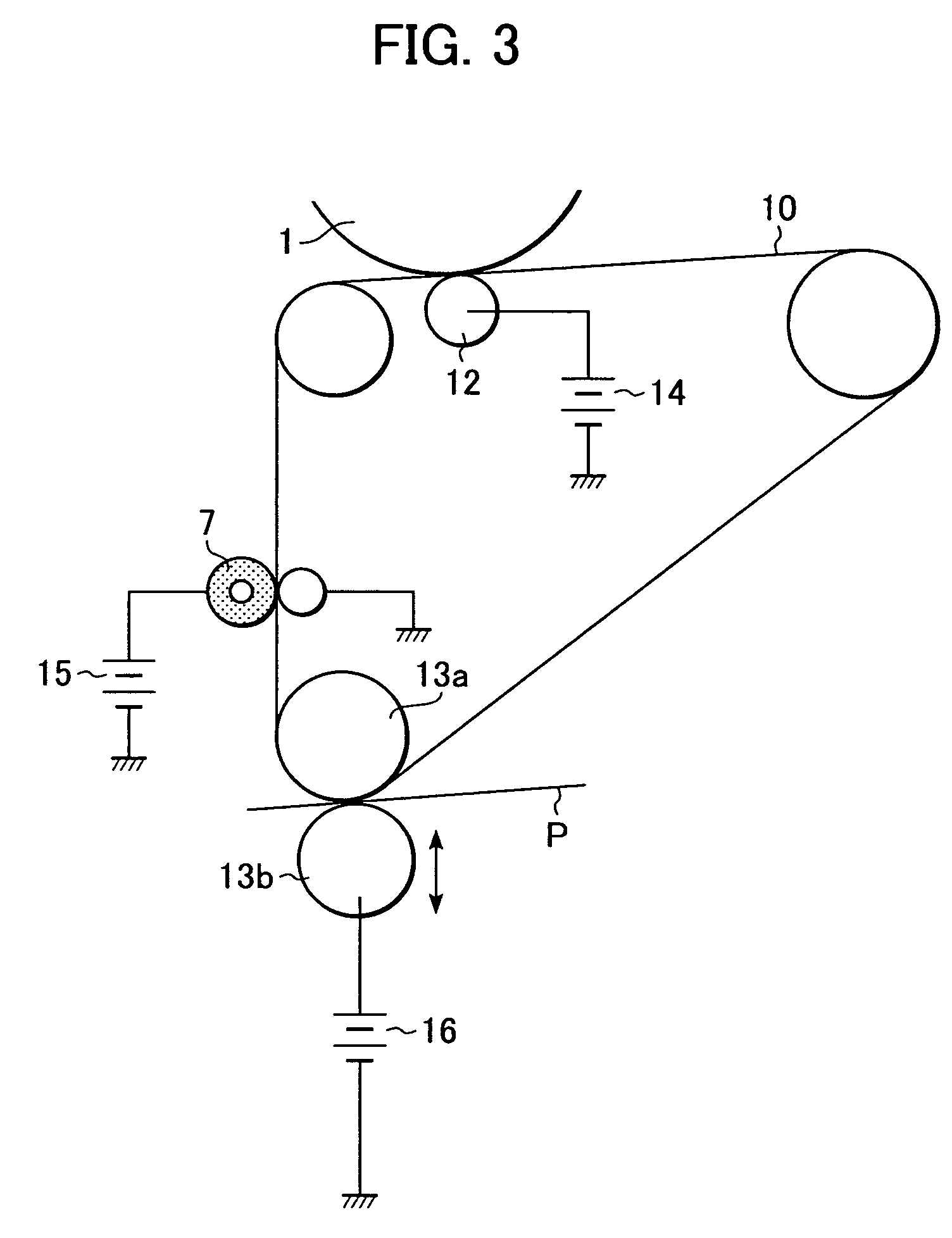Toner
a technology of toner and pulverizer, applied in the field of toner, can solve the problems of difficult removal of high flowability, irregular surface of toner obtained by pulverization methods, and known decrease in transfer efficiency, and achieve the effects of stable charge characteristics, less scattering, and high quality
- Summary
- Abstract
- Description
- Claims
- Application Information
AI Technical Summary
Benefits of technology
Problems solved by technology
Method used
Image
Examples
example 1
[0249]To 900 parts of ion-exchange water heated to 60° C., 3 parts of tricalcium phosphate was added, and the mixture was stirred at 10,000 rpm using a TK Homomixer (manufactured by Tokushu Kika Kogyo Co., Ltd.) to prepare an aqueous medium.
[0250]A polymerizable monomer composition, the components of which are described below, was placed in a TK Homomixer (manufactured by Tokushu Kika Kogyo Co., Ltd.), heated to 60° C., and stirred at 9,000 rpm to prepare a homogenous mixture:[0251]162 parts of styrene;[0252]38 parts of n-butylacrylate;[0253]10 parts of C.I. Pigment Blue 15:3;[0254]1 part of polar polymer 1;[0255]20 parts of polyester resin;[0256]24 parts of a polycondensate of propylene-oxide-modified bisphenol A and isophthalic acid (Tg=67° C., Mw=10,000, Mn=6,300); and[0257]1.0 part of divinylbenzene.
[0258]To the homogeneous mixture, 7 parts of a polymerization initiator, namely, 2,2′-azobis(2,4-dimethylvaleronitrile) was dissolved to prepare a polymerizable monomer composition.
[...
example 2
[0300]A toner was prepared as in EXAMPLE 1 except that the polar polymer was changed from the polar polymer 1 to the polar polymer 2.
example 3
[0301]A toner was prepared as in EXAMPLE 1 except that the polar polymer was changed from the polar polymer 1 to the polar polymer 3 and the amount of the polar polymer was changed to 1.5 parts.
PUM
| Property | Measurement | Unit |
|---|---|---|
| weight-average particle diameter | aaaaa | aaaaa |
| weight-average particle diameter | aaaaa | aaaaa |
| glass transition temperature | aaaaa | aaaaa |
Abstract
Description
Claims
Application Information
 Login to View More
Login to View More - R&D
- Intellectual Property
- Life Sciences
- Materials
- Tech Scout
- Unparalleled Data Quality
- Higher Quality Content
- 60% Fewer Hallucinations
Browse by: Latest US Patents, China's latest patents, Technical Efficacy Thesaurus, Application Domain, Technology Topic, Popular Technical Reports.
© 2025 PatSnap. All rights reserved.Legal|Privacy policy|Modern Slavery Act Transparency Statement|Sitemap|About US| Contact US: help@patsnap.com



